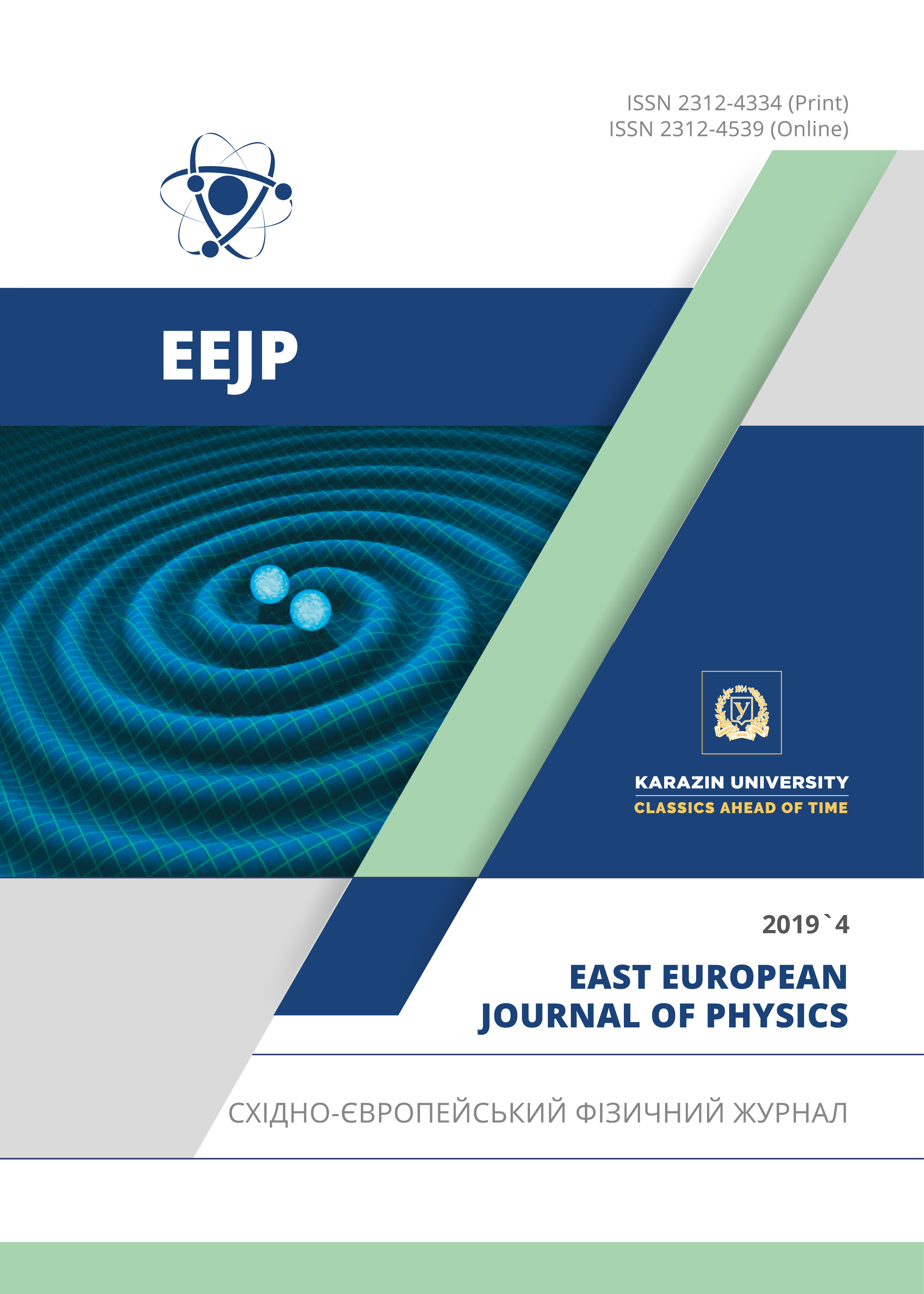On Frequency and Spatial Periodicity of the Waves of the Anomalous Amplitude in the Ocean
Abstract
The paper shows that the waves of anomalous amplitude are long-lived formations. They drift in the direction of the wave motion with the group velocity of the wave packet, which is half the phase velocity of the main wave. The swing of the wave (the distance from the hump to the trough) of the anomalous amplitude is more than three times the average value of the sweep of the wave motion. The modulation instability of this wave form a perturbation spectrum, the energy of which is twice the energy of the main wave in the developed process mode. The spatial size of the wave packet practically does not change, the amplitude of the swing in the maximum first increases, then gradually decreases. The number of such waves in areas of strong wind exposure is much larger than the statistics of random interference processes allow. This is due to the influence of the main wave (its amplitude remains noticeably greater than the amplitudes of each of the modes of the wave packet) on the behavior of each pair of modes from the wave packet of the perturbation. In the laboratory system, the duration of the anomalous wave coincides qualitatively with the time of existence of the Peregrin autowave. Although the Peregrin autowave corresponds to a different physical reality, where the dispersion of the wave is weak. Gravitational surface waves have a strong dispersion, and the NSE equation in this case is noticeably modified. However, in rest system of the wave packet (moving relative to the laboratory system) the abnormal amplitude wave lifetime is much longer. The distance that the wave packet travels with a persisting anomalous sweep is at least equal to several hundred wavelengths and can reach hundreds of kilometers. A simple calculation of such waves by means of space monitoring due to the small viewing area (frame) may be inaccurate. Once formed, such waves are able to drift over considerable distances. However, they may well get into the next frame of view. That is, estimates of the number of such waves can be overestimated.
Downloads
References
V.I. Karpman, Нелинейные волны в диспергирующих средах [Nonlinear waves in dispersing media] (Nauka, Moscow, 1975), pp. 175. (in Russian)
M.J. Lighthill, IMA Journal of Applied Mathematics, 1(3), 269–306 (1965), https://doi.org/10.1093/imamat/1.3.269.
E.V. Belkin. PhD-thesis (V.N. Karazin Kharkiv National University, Kharkiv, 2010), pp. 150. (in Russian)
E.V. Belkin, A.V. Kirichok A.V. and V.M. Kuklin, VANT Ser. Plasma electronics and new acceleration methods, 68(4), 291 295 (2010).
E.V. Belkin, A.V. Kirichok, V.M. Kuklin and A.V. Priymak, East Eur. J. Phys. 1(2), 4-39 (2014). (in Russian).
V.M. Chernousenko, V.M. Kuklin, I.P. Panchenko and V.M. Vorob’ev, in IV Int. Workshop on Nonlinear and Turbulent Proc. In Physics. (Singapore, World Scientific, 1990), 2, pp. 776-803.
V.M. Kuklin. Избранные главы. Теоретическая физика. [Selected Chapters. Theoretical Physics] (V.N. Karazin Kharkiv National University, Kharkiv, 2018), pp. 224. (in Russian)
A. Chabchoub, N. Hoffmann and N. Akhmediev, Physical Review Letters, 106, 204502 (2011), https://doi.org/10.1103/PhysRevLett.106.204502.
D. Peregrine. The ANZIAM Journal, 25(1), 16–43 (1983), https://doi.org/10.1017/S0334270000003891.
V.E. Zakharov, Eur. J. Mech. B Fluids. 18(3), 327–344 (1999).
A.I. Dyachenko and V.E. Zakharov, JETP Lett. 81(6), 255–259 (2005), https://doi.org/10.1134/1.1931010.
A.A. Kurkin and E.N. Pelinovsky, Волны убийцы: Факты, теория и моделирование. [Killer waves: facts, theory and modeling], (UNN, Nizhny Novgorod, 2004). (in Russian).
P. Stansell, Ocean Engineering, 32(8-9), 1015–1036 (2005), https://doi.org/10.1016/j.oceaneng.2004.10.016.
A. Chabchoub, N. Hoffmann, M. Onorato, and N. Akhmediev, Physical Review X, 2, 011015 (2012), https://doi.org/10.1103/PhysRevX.2.011015.
Authors who publish with this journal agree to the following terms:
- Authors retain copyright and grant the journal right of first publication with the work simultaneously licensed under a Creative Commons Attribution License that allows others to share the work with an acknowledgment of the work's authorship and initial publication in this journal.
- Authors are able to enter into separate, additional contractual arrangements for the non-exclusive distribution of the journal's published version of the work (e.g., post it to an institutional repository or publish it in a book), with an acknowledgment of its initial publication in this journal.
- Authors are permitted and encouraged to post their work online (e.g., in institutional repositories or on their website) prior to and during the submission process, as it can lead to productive exchanges, as well as earlier and greater citation of published work (See The Effect of Open Access).








